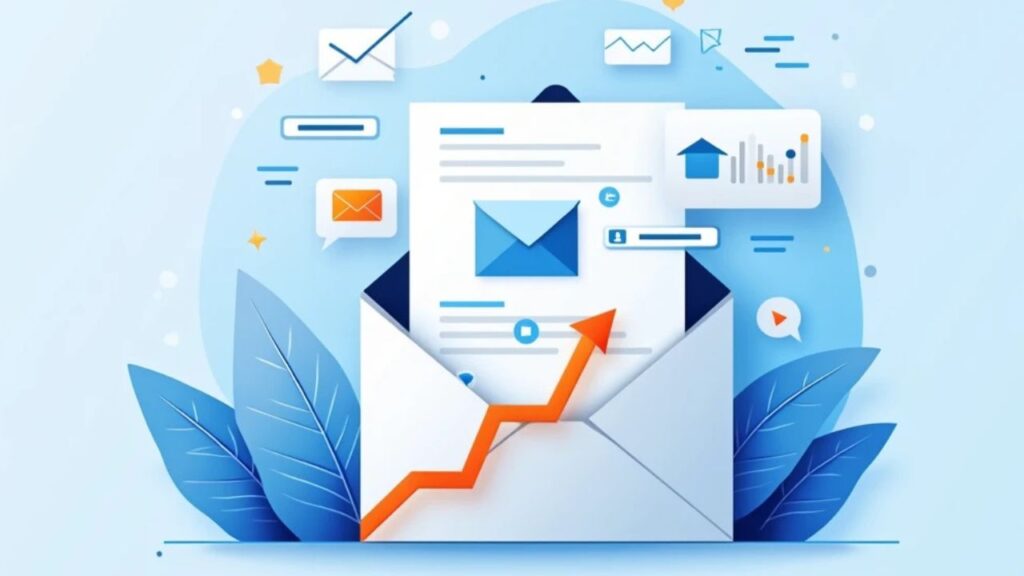Understanding the Basics of Email Marketing
Email marketing is a powerful digital marketing tool that involves sending emails to a targeted audience to promote products, services, or brand awareness. It serves as a direct line of communication between businesses and their customers, allowing for personalized interactions and relationship building. Unlike other marketing channels, such as social media or traditional advertising, email marketing provides the unique advantage of direct access to a customer’s inbox, facilitating engagement and conversion opportunities.
In the digital marketing landscape, the importance of email marketing cannot be overstated. It offers measurable results and a high return on investment (ROI) compared to many other channels. With the ability to segment audiences and tailor content, businesses can create customized campaigns that resonate with specific demographics, increasing the likelihood of achieving desired goals.
Different types of emails play distinct roles in a comprehensive marketing strategy. For instance, newsletters keep subscribers informed about company updates, promotional offers entice customers with discounts or sales, while transactional emails serve functional purposes, such as order confirmations and shipping notifications.
However, with the growing importance of email marketing also comes the necessity for compliance with regulations like the General Data Protection Regulation (GDPR) and the CAN-SPAM Act. These laws impose strict guidelines on how businesses can collect and manage email addresses and communicate with their audience. Building an email list ethically is paramount; obtaining consent from subscribers ensures that businesses maintain trust and protect user privacy while mitigating potential legal issues. Adhering to these regulations not only safeguards customer data but also enhances brand reputation in an increasingly aware consumer environment.

Building an Engaging Email List
Creating an effective email marketing strategy begins with establishing a robust email list. An engaging email list is not merely about the number of subscribers; it is about attracting the right individuals who are genuinely interested in your brand and offerings. One effective technique for growing your email subscriber list is through the use of lead magnets. These are incentives, such as free e-books, checklists, or exclusive discounts, offered in exchange for a visitor’s email address. Lead magnets should be tailored to your target audience’s interests to maximize the likelihood of high conversion rates.
Another essential aspect of building an engaging email list is the creation of user-friendly sign-up forms. These forms should be easily accessible on your website, preferably on prominent pages like the homepage, blog posts, or specific landing pages. The form should not only request minimal information—essentially a name and email address—but also clearly communicate the benefits of subscribing. To enhance visibility, consider utilizing eye-catching calls-to-action that encourage visitors to sign up.
In addition to these tactics, leveraging social media platforms is an excellent way to attract potential subscribers. Promoting your newsletter or special sign-up offers on channels such as Facebook, Instagram, or Twitter can help you reach a wider audience. Engaging content that resonates with your online community can further encourage followers to join your email list.
Moreover, targeting the right audience and segmenting your email list is crucial to delivering personalized content. Robust segmentation ensures that your subscribers receive information tailored to their preferences, which can significantly increase email open and click-through rates. It is also essential to regularly clean and update your list to remove inactive subscribers and maintain engagement levels.
Lastly, implementing opt-in strategies is vital to fostering trust. Transparency about how subscribers’ data will be used enhances credibility and ensures compliance with regulations, such as GDPR. By implementing these effective techniques, you will create a well-maintained, engaging email list that can serve as the foundation for a successful email marketing campaign.
Crafting Compelling Email Campaigns
Effective email campaigns begin with engaging subject lines, as they are the first interaction recipients have with your content. A well-crafted subject line effectively captures attention, piques curiosity, and encourages recipients to open the email. Utilizing actionable language, personalizing with names, and keeping it concise are essential strategies. Aim for a subject line that resonates and reflects the email’s content, while avoiding spammy triggers that could land your email in the junk folder.
The design of the email is equally crucial in motivating recipients to take action. A clean, visually appealing layout enhances readability and user experience. Utilize whitespace strategically, ensuring that elements do not overwhelm the reader. Incorporating images and brand colors can create a cohesive look, but be cautious of overloading with graphics that may slow loading times. A mobile-friendly design is imperative, as a significant portion of users engage with emails on their mobile devices.
Once the design is in place, the call-to-action (CTA) button must be prominent and persuasive. This element guides the reader on what to do next, whether it’s making a purchase, signing up for a webinar, or downloading an e-book. The CTA should stand out within the email, use action-oriented verbiage, and create a sense of urgency when appropriate. Additionally, consider placing multiple CTAs throughout longer emails to cater to varying reader preferences and engagement levels.
A/B testing is a powerful practice that allows marketers to evaluate different aspects of their email campaigns. Through systematic experimentation with various subject lines, designs, and CTAs, you can identify which combinations yield the highest engagement rates. Successful campaigns often share insights gained through testing, allowing marketers to refine their strategies. By adopting best practices and continually analyzing campaign performance, businesses can significantly improve their email marketing efforts.

Measuring Success and Optimizing Email Marketing
Effectively measuring the success of email marketing campaigns is pivotal for any business seeking to enhance customer engagement and maximize return on investment (ROI). A variety of key metrics serve as indicators of performance, allowing marketers to assess the effectiveness of their strategies and make informed decisions moving forward.
The open rate is typically one of the first metrics evaluated. This metric indicates the percentage of recipients who opened an email compared to the total number of emails delivered. A higher open rate suggests that subject lines were compelling and the sender is trusted. Following that, the click-through rate (CTR) measures the ratio of users who clicked on one or more links contained in the email. A strong CTR indicates that the content resonates with the audience and encourages engagement.
Conversion rates further reflect the effectiveness of email marketing. This metric quantifies the percentage of recipients who completed a desired action, such as making a purchase or signing up for a newsletter, after following a link from the email. Monitoring bounce rates is also essential; it tracks emails that could not be delivered and can signal issues with list management or data hygiene.
To track these metrics, numerous tools are available, such as Google Analytics, Mailchimp, and HubSpot. These platforms provide valuable insights into campaign performance through dashboards and reporting features. Accurate interpretation of this data is crucial; it informs adjustments to future campaigns, ensuring they are tailored effectively to meet the audience’s preferences. Ongoing optimization can also be achieved through strategies like re-engagement campaigns targeting inactive subscribers and the implementation of automated workflows to nurture leads. Regularly revisiting and refining approaches based on gathered data will enhance email marketing efforts and lead to sustained success over time.
Conclusion
Mastering email marketing requires a strategic approach that combines targeted list-building, compelling campaign creation, and continuous optimization. By understanding the fundamentals of email marketing, businesses can leverage personalized communication to strengthen customer relationships and drive conversions.
A well-maintained email list ensures that messages reach engaged and interested recipients, while effective campaign design—featuring attention-grabbing subject lines, visually appealing layouts, and clear calls to action—enhances engagement. Additionally, tracking key performance metrics such as open rates, click-through rates, and conversion rates enables marketers to refine their strategies for maximum impact.
As digital marketing evolves, email remains a vital tool for businesses seeking to build lasting connections with their audience. By consistently optimizing email marketing efforts and staying adaptable to industry trends, businesses can achieve long-term success in their marketing campaigns.
FAQ – Email Marketing
1. What is email marketing?
Email marketing is a digital marketing strategy that involves sending emails to a targeted audience to promote products, services, or brand awareness. It helps businesses build customer relationships and drive engagement.
2. Why is email marketing important for businesses?
Email marketing provides direct access to customers, offers a high return on investment (ROI), and allows personalized communication. It also helps businesses retain customers, increase conversions, and track campaign performance through analytics.
3. How can I grow my email subscriber list?
To build an engaging email list, you can:
- Offer lead magnets (e-books, discounts, free trials).
- Use simple, easy-to-find sign-up forms on your website.
- Promote your email list on social media.
- Ensure compliance with privacy laws by obtaining user consent.
4. What are the key elements of a successful email campaign?
A successful email campaign includes:
- A compelling subject line to boost open rates.
- Well-structured, visually appealing, and mobile-friendly content.
- A clear call to action (CTA) guiding recipients toward the next step.
- Personalization and segmentation for targeted messaging.
5. How can I avoid my emails going to spam?
To prevent emails from being marked as spam:
- Avoid using spam-triggering words (e.g., “free,” “urgent,” “guarantee”).
- Ensure recipients have opted in to receive emails.
- Use a reputable email marketing platform.
- Include an easy-to-find unsubscribe link.
6. What metrics should I track to measure email marketing success?
Key metrics to monitor include:
- Open Rate – The percentage of recipients who opened the email.
- Click-Through Rate (CTR) – The percentage of recipients who clicked a link.
- Conversion Rate – The percentage of recipients who completed the desired action (e.g., purchase, sign-up).
- Bounce Rate – The percentage of emails that were not delivered.
7. How can A/B testing improve email marketing results?
A/B testing allows marketers to experiment with different subject lines, email designs, and CTAs to determine which version performs best. This data-driven approach helps optimize future campaigns for better engagement and conversions.
8. How do I re-engage inactive subscribers?
To re-engage inactive subscribers:
- Send re-engagement emails with exclusive offers.
- Ask for feedback on content preferences.
- Offer an easy way to update subscription settings.
- Remove consistently inactive subscribers to maintain a healthy email list.
9. What tools can help with email marketing?
Popular email marketing tools include:
- Mailchimp – User-friendly with automation features.
- HubSpot – Advanced CRM and email tracking.
- Constant Contact – Great for small businesses.
- Google Analytics – Tracks website traffic from email campaigns.
10. How can I continuously improve my email marketing strategy?
- Regularly analyze performance metrics.
- Personalize content based on user behavior.
- Optimize email design for mobile users.
- Experiment with different campaign formats and timing.
More about email marketing



